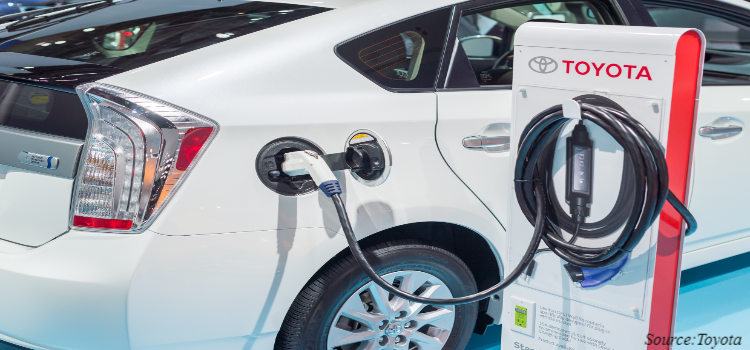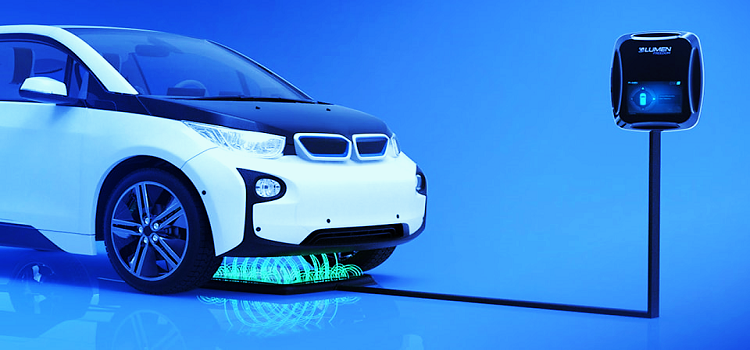
Spain Electric Vehicle (EV) Charging Market by Charging Type (Off-Board Top-Down Pantograph, On-Board Bottom-Up Pantograph, and Charging Via Connector), Charging Voltage Level (Level 1 (<3.7 KW), Level 2 (3.7–22 KW), and Level 3 (Above 22 KW)), Charger Type (Slow Charger and Fast Charger), Vehicle Charging (AC, DC, Inductive Charging), Application (Commercial and Residential), Commercial (Commercial Public EV Charging Stations, On-Road Charging and Commercial Private EV Charging Stations), Installation Type (Portable Charger and Fixed Charger), IoT Connectivity (Non-Connected Charging Stations and Smart Connected Charging Stations (Networked)) and Charging Standard (CCS, CHADEMO & GB/T, Type 1/Normal Charging, Tesla Super Charger, Type-2, and Level 3) – Opportunity Analysis and Industry Forecast 2023–2030
Industry: Automotive & Transportation | Publish Date: 25-Sep-2023 | No of Pages: 90 | No. of Tables: 72 | No. of Figures: 41 | Format: PDF | Report Code : N/A
Market Definition
Spain Electric Vehicle (EV) Charging Market was valued at USD 167.86 million in 2022, and is predicted to reach USD 1180.9 million by 2030, with a CAGR of 28.3% from 2023 to 2030. Electric vehicle chargers are essential infrastructure for connecting plug-in electric vehicles to electrical outlets, enabling them to charge their batteries. They are categorized based on the rate of energy delivery to the vehicle's battery over time. Charging levels range from level 1 to level 3, with higher levels delivering power more quickly. Advanced charging stations may feature smart meters, cellular connectivity, and network access to enhance functionality.
Electric vehicles, including neighborhood EVs and plug-in hybrids, can be charged at these stations, reducing carbon emissions and mitigating the environmental impact of transportation. Commercial spaces have seen a higher penetration of EV charging infrastructure compared to residential areas. Public charging stations with ultra-fast capabilities are particularly beneficial for long-distance travel. Nevertheless, residential EV chargers hold substantial growth potential due to their affordability and convenience, making them an attractive option for those looking for practical and accessible EV charging solutions.
Spain's Push for Net-Zero Emissions Drives the Growth of the EV Charging Market
The increasing adoption of electric vehicles among the Spanish population to meet its net-zero carbon emission mission to cope with environmental concerns and minimize the use of fossil fuels drives the growth of the EV charging market. As per the Spanish Association of Insurers and Reinsurers, Spain presently boasts 674,000 electric and hybrid vehicles. Notably, in January 2022, the country recorded sales of 19,845 electric, hybrid, or gas-powered vehicles, highlighting the increasing popularity of environmentally friendly transportation solutions.
Government Funding Boosts Growth of EV Charging Infrastructure Market
The market is experiencing significant growth due to the increasing support from the government in enhancing EV infrastructure. This support comes in the form of allocated funds aimed at improving and expanding EV charging facilities. These initiatives are driving the growth of the EV charging market, creating a more robust and accessible charging infrastructure to meet the rising demand for electric vehicles.
For instance, Spain launched its biggest electrification program, MOVES, with a budget of USD 45 million allocated to the promotion of electric vehicles and charging infrastructure in 2019. Under the second iteration of the MOVES plan, the Spanish government has secured USD 100 million for charging infrastructure and the acquisition of electric cars. MOVES III was launched in 2021 to build upon previously established measures and is managed by local authorities.
Fast Chargers' High Initial Setup Costs Hinder the EV Charging Market Growth
Lack of incentives and worries about the high installation costs of EV charger installation could prevent the growth of the sector. One of the biggest barriers to the expansion of this business is the high initial cost of level 3 and ultra-fast chargers. While level 1 and level 2 chargers can take anything from 6 to 16 hours to fully charge, consumers typically charge their fossil fuel vehicles in 5 to 7 minutes.
Fast chargers that can charge EVs in under 30 minutes are therefore in demand on the market. A level 3 charging station can be somewhat expensive at first, though. For those who might want to transition to EVs, this could be a deterrent because a lengthy charging period might interfere with their already hectic schedules.
Surging Adoption of Vehicle-to-Grid (V2G) EV Charging Stations in Spain Unlocks Promising Opportunities
A technology called vehicle-to-grid (V2G) EV charging allows plug-in EVs and the power grid to exchange electrical energy in both directions. Electric vehicles (EVs) can store extra electricity and release it to the grid thanks to V2G technology. This may enhance the functionality of the electrical component and increase value for EV owners.
The development of this concept has made charging for electric vehicles easier, and EVs are now among people's top transportation options. As a result, the entire market for charging stations is essential for connecting the electric vehicle to the grid and enabling the vehicle to charge.
Two V2G EV vehicle charging stations were erected by Enel Energia S.p.A. at the Italian Institute of Technology's Genoa headquarters. The installation is a part of MOV-E, a Nissan-sponsored corporate electric car sharing trial project. The Italian Institute of Technology received two battery electric vehicles (LEAF models) from Nissan as well as the Glide app management platform. The partnership between Enel and Nissan represents a shift in the way that technology is used for sustainable transportation.
As a result, manufacturers have a great chance with the V2G charging technology because it is predicted to change the EV industry and determine how EVs will be charged in the future. Although V2G infrastructure is more beneficial than smart charging, installing V2G charging stations has a hefty up-front cost. Manufacturers of EV connectors are projected to have opportunities to produce sophisticated connectors to withstand electrical architecture due to the predictable and anticipated expansion of V2G technology.
Competitive Landscape
The Spain Electric Vehicle (EV) Charging industry includes several market players such as ABB Ltd., ChargePoint, Inc, Tesla Inc, Shell Recharge Solutions, Star Charge, TELD, Siemens, BYD, EVgo, and Hyundai Motor Company.
KEY BENEFITS
-
The Spain Electric Vehicle (EV) Charging market report provides a quantitative analysis of the current market and estimations through 2023-2030 that assists in identifying the prevailing market opportunities to capitalize on.
-
The study comprises a deep dive analysis of the market trend including the current and future trends for depicting the prevalent investment pockets in the market.
-
The information related to key drivers, restraints, and opportunities and their impact on the market is provided in the report.
-
The competitive analysis of the market players along with their market share in the Spain Electric Vehicle (EV) Charging market.
-
The SWOT analysis and Porter’s Five Forces model are elaborated in the study.
-
Value chain analysis in the market study provides a clear picture of the stakeholders’ roles.
SPAIN ELECTRIC VEHICLE (EV) CHARGING MARKET KEY SEGMENTS
By Charging Type
-
Off-Board Top-Down Pantograph
-
On-Board Bottom-Up Pantograph
-
Charging Via Connector
By Charging Voltage Level
-
Level 1 (<3.7 KW)
-
Level 2 (3.7–22 KW)
-
Level 3 (Above 22 KW)
By Charger Type
-
Slow Charger
-
Fast Charger
By IOT Connectivity
-
Non-Connected Charging Stations
-
Smart Connected Charging Stations (Networked)
By Vehicle Charging
-
AC (Normal Charging)
-
DC (Super Charging)
-
Inductive Charging
By Application
-
Commercial
-
Residential
By Commercial
-
Commercial Public EV Charging Stations
-
On-Road Charging
-
Parking Spaces
-
Destination Chargers
-
-
Commercial Private EV Charging Stations
-
Fleet Charging
-
Captive Charging
-
By Installation Type
-
Portable Charging
-
Fixed Charging
-
Wall Mount
-
Pedestal Mount
-
Ceiling Mount
-
By Charging Standard
-
CCS
-
CHADEMO & GB/T
-
Type 1/Normal Charging
-
Tesla Super Charger
-
Type-2
-
Level 3
REPORT SCOPE AND SEGMENTATION:
|
Parameters |
Details |
|
Market Size in 2022 |
USD 167.86 Million |
|
Market Volume in 2022 |
13 Thousand Units |
|
Revenue Forecast in 2030 |
USD 1180.9 Million |
|
Growth Rate |
CAGR of 28.3% from 2023 to 2030 |
|
Analysis Period |
2022–2030 |
|
Base Year Considered |
2022 |
|
Forecast Period |
2023–2030 |
|
Market Size Estimation |
Million (USD) |
|
Growth Factors |
The rising electric vehicle adoption. The increasing government initiatives. |
|
Companies Profiled |
10 |
|
Market Share |
Available for 10 companies |
|
Customization Scope |
Free customization (equivalent up to 80 working hours of analysts) after purchase. Addition or alteration to country, regional, and segment scope. |
|
Pricing and Purchase Options |
Avail customized purchase options to meet your exact research needs. |
KEY PLAYERS
-
ABB Ltd.
-
ChargePoint, Inc
-
Tesla Inc
-
Shell Recharge Solutions
-
Star Charge
-
TELD
-
Siemens
-
BYD
-
EVgo
-
Hyundai Motor Company




 Speak to Our Analyst
Speak to Our Analyst


































